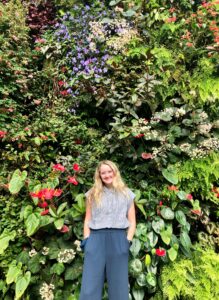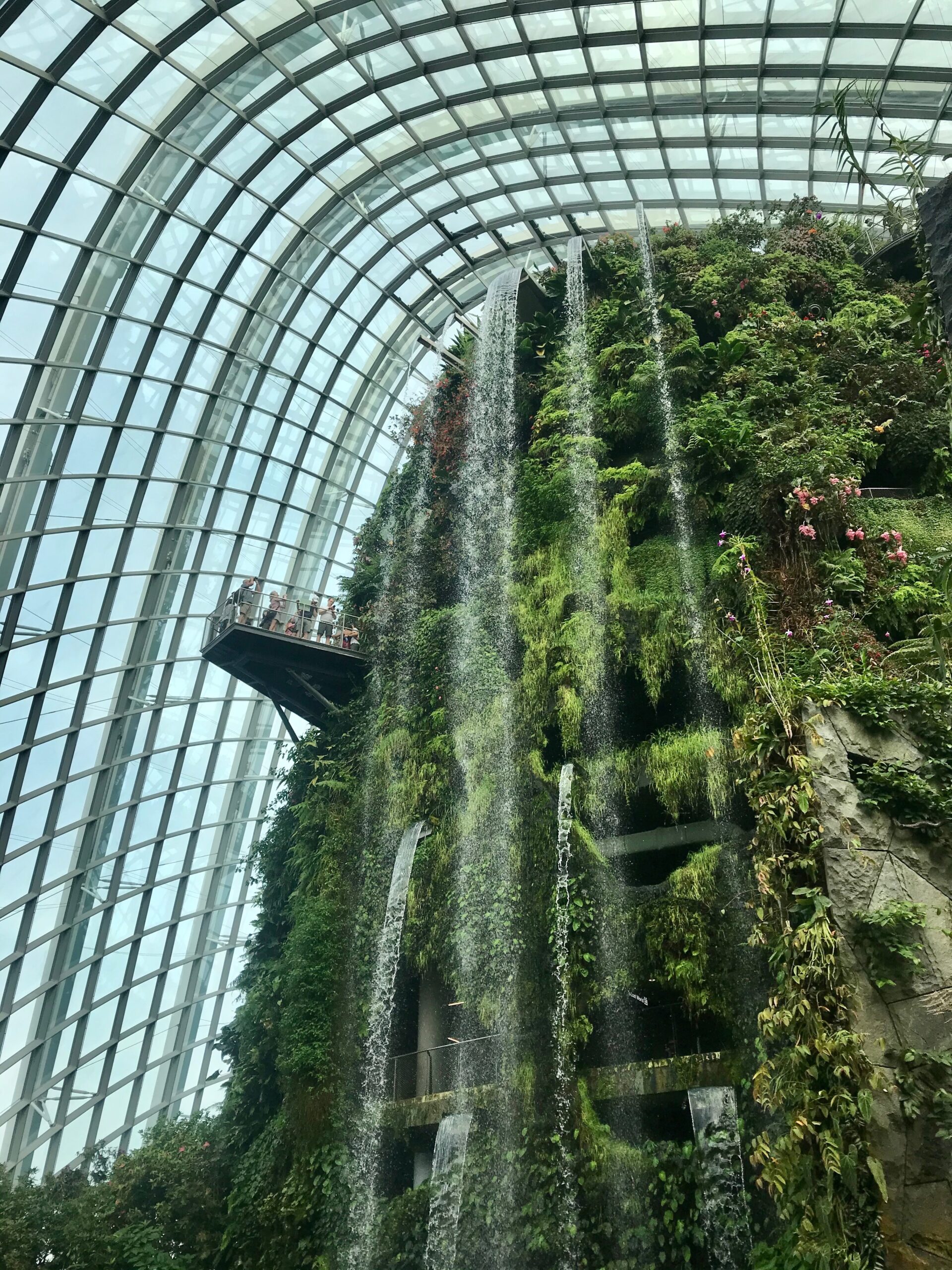dispatch from Tessa Dethlefs ‘21, biology major, statistics and music minors
“Woah, it’s chilly in here!” I exclaimed as I strolled through the automatic doors of Cloud Forest in stifling Singapore. With the mist of the world’s tallest indoor waterfall hitting my skin, I knew I was in my element. My biology major senses were on high alert as I craned my head back and peered to the top of the towering “mountain” filled with lush, diverse vegetation in the middle of the glass dome.
 While I was excited to test my ecology knowledge, the liberal arts aspect of my education caused me to question the intent of the space I was in. I had not done any prior research on Cloud Forest – when on tour, I just go where I’m told. That said, I was somewhat speculative as I sauntered past the waterfall, taking in the sights around me while attempting to discern if this attraction was simply for tourist Instagram moments, or if it had larger implications.
While I was excited to test my ecology knowledge, the liberal arts aspect of my education caused me to question the intent of the space I was in. I had not done any prior research on Cloud Forest – when on tour, I just go where I’m told. That said, I was somewhat speculative as I sauntered past the waterfall, taking in the sights around me while attempting to discern if this attraction was simply for tourist Instagram moments, or if it had larger implications.
This internal conflict was resolved when I walked up to the first sign I came across and read about how Cloud Forest acts as a biome that imitates the climate and vegetation of a high elevation cloud forest environment. As my eyes scanned the sign, they darted to the subtitle “Climate change” under which it described how cloud forest plant species can act as early indicators of climate change, given the sensitivity of high elevation habitats to changes in climate. At this point, I had the reassurance I needed to drop my cynicism and revel in the biodiversity surrounding me. Moving from the shaded mountain floor toward the sunny higher elevations with a view of Marina Bay Sands, I quickly glanced back and forth with a subtle grin on my face, taking in the sights of every fern, pitcher plant, and orchid I passed.
Given the inevitable tour time constraints, my friends and I had to walk through the various zones of Cloud Forest quicker than I would have preferred. However, this pace began to slow as the attractions within the mountain began to focus on the Anthropocene and climate change, addressing how human actions are threatening the very biodiversity we had all just marveled at on the mountain. Not unlike myself, the moods of the tourists surrounding me shifted from innocent joy to gloomy reflection, from laughter to despondent murmurs. At this point, I turned to my friend and admitted, “If you want me to leave anytime soon, you’ll have to pull me out.”
I plan to pursue a career in ecological research focusing on anthropogenic disturbance and hope to apply management practices to support irreplaceable species and ecosystems. Consequently, I relished in the unforgiving knowledge surrounding me, and was stunned at the relation between my career goals and the intent of Cloud Forest. After watching a video that laid out the consequences of each additional 0.1-degree Celsius rise in global temperature, the mood shifted yet again as the final zone of Cloud Forest focused on what could be. Though we had to hurry through this area, it addressed the changes we can make to ensure that the species we saw on the mountain and beyond do not disappear at our fingertips.
With open eyes and restored hope, I left Cloud Forest with heavy feelings I had not expected from Singapore. Though I had heard it referred to as “the country of the future,” I can now give my unofficial stamp of approval on this title, knowing that it is a country that values the futures of humans and irreplaceable ecosystems alike.

Leave a Reply
You must be logged in to post a comment.